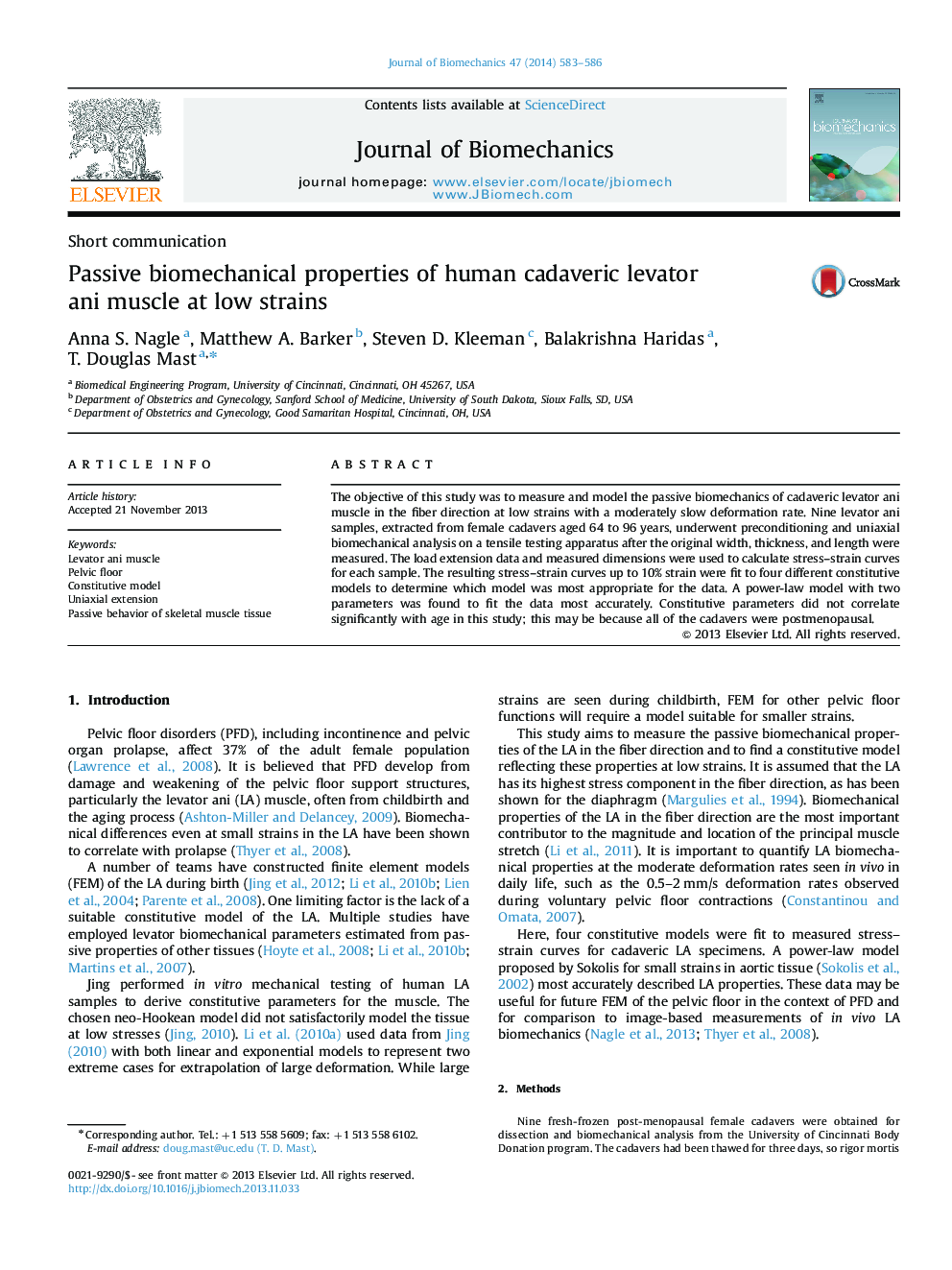| Article ID | Journal | Published Year | Pages | File Type |
|---|---|---|---|---|
| 10431574 | Journal of Biomechanics | 2014 | 4 Pages |
Abstract
The objective of this study was to measure and model the passive biomechanics of cadaveric levator ani muscle in the fiber direction at low strains with a moderately slow deformation rate. Nine levator ani samples, extracted from female cadavers aged 64 to 96 years, underwent preconditioning and uniaxial biomechanical analysis on a tensile testing apparatus after the original width, thickness, and length were measured. The load extension data and measured dimensions were used to calculate stress-strain curves for each sample. The resulting stress-strain curves up to 10% strain were fit to four different constitutive models to determine which model was most appropriate for the data. A power-law model with two parameters was found to fit the data most accurately. Constitutive parameters did not correlate significantly with age in this study; this may be because all of the cadavers were postmenopausal.
Related Topics
Physical Sciences and Engineering
Engineering
Biomedical Engineering
Authors
Anna S. Nagle, Matthew A. Barker, Steven D. Kleeman, Balakrishna Haridas, T. Douglas Mast,
